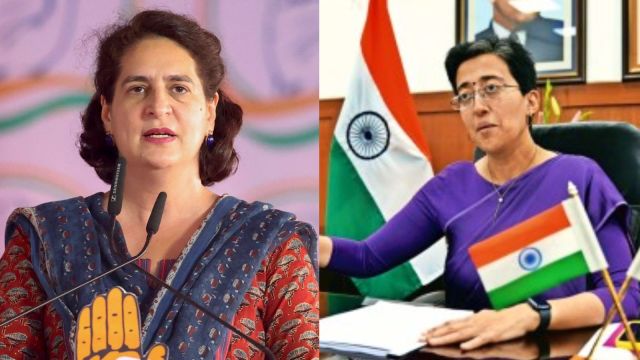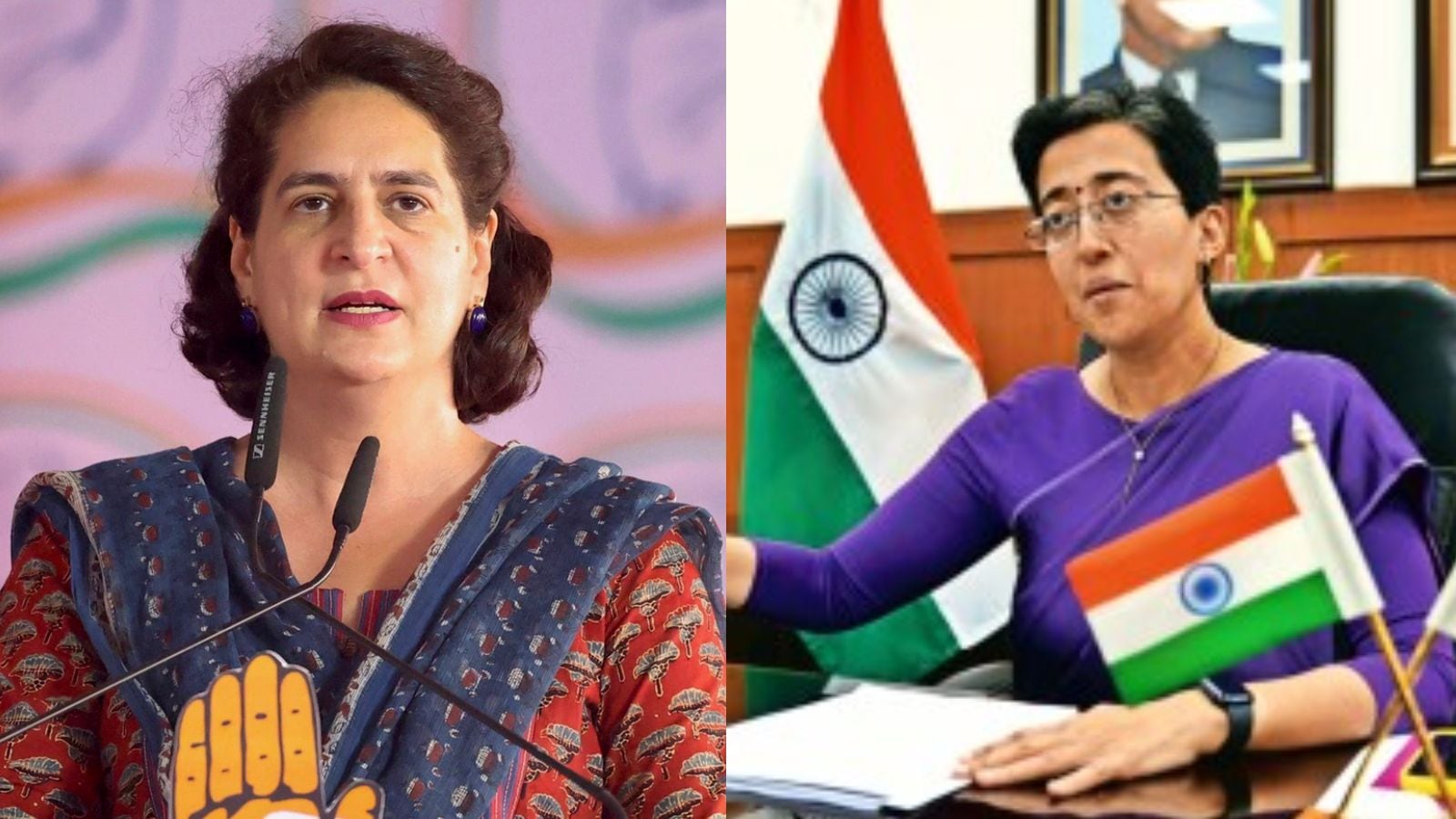

Rukmini Sen
Jan 14, 2025 17:42 IST First published on: Jan 14, 2025 at 17:36 IST
Women have emerged as a significant vote bank in the last few elections in India. Despite that, political speeches of elected representatives or contestants across parties have consistently displayed an aversion to or prejudice against women. Comments have ranged from “How much are you being sold for”, “Worse than a prostitute”, “Kitni jagah leti hai woh, unka to chunao chinh hathi hai (She takes so much space, even her party symbol is that of an elephant)”, “dented-painted women protestors”, “the length of cigarettes she smokes and who she lives with”, “worse than a woman”, “temptress”, “enthral people with ghungroos and thumkas”, to “top khule nachleo vote debo na (Won’t vote for her even if she dances with her top off)”. The recent remarks by BJP leader Ramesh Bidhuri on Priyanka Gandhi’s “cheeks” and Atishi’s “change of father” add to the miserable trend. Even holding an office as high as the Chief Minister’s does not serve as a deterrent to misogynist remarks attaching derogatory and sexualised meanings concerning the body, character, conduct, and profession.
On many such occasions, the parent organisation has distanced themselves from the remarks, an apology has been publicly tendered, an explanation has been provided that the comment was misconstrued, and even courts or women’s commissions have intervened. Research conducted by Amnesty International found that women politicians in India receive, on average, 113 hostile tweets per day which equals one in every seven about women politicians, with a fifth being sexist or misogynistic. But are these comments only misogyny or a symbol of discursive power hierarchies flowing through kinship to politics?
According to the Merriam-Webster dictionary, the etymological Greek roots of misogyny are misein (to hate) and gyne (woman). Misogyny assumes many forms, including male privilege, gender discrimination, sexual harassment, vilification and belittlement of women, violence and abuse, and sexual objectification, all of which are evident in the speeches and remarks normalised and legitimised during political campaigns.
The 267th Law Commission Report recommended the inclusion of “Hate Speech” within the Indian Penal Code (IPC) in 2017. The Commission was working on the intervention of the Supreme Court, which in a 2011 judgment, in connection to hate speech by political parties, stated: “Hate speech is an effort to marginalise individuals based on their membership in a group. Using expression that exposes the group to hatred, hate speech seeks to delegitimise group members in the eyes of the majority, reducing their social standing and acceptance within society. Hate speech, therefore, rises beyond causing distress to individual group members. It can have a societal impact”. Two new sections, “Prohibiting incitement to hatred” and “Causing fear, alarm, or provocation of violence in certain cases”, were proposed in the same year. The report had proposed the inclusion of sex, gender identity, sexual orientation, caste, community, and tribe in addition to religion, race, place of birth, residence, and language as identifiable social categories while publicly using gravely threatening words, or advocating hatred by words either spoken or written; not just to incite violence but also with the intention to cause fear or alarm. Neither the IPC nor the Bharatiya Nyaya Sanhita 2023 included these provisions.
Unlike India, South Africa has expressly carved out speech that incites or advocates hatred on the grounds of gender (among others). Interestingly, even in India, the Scheduled Castes, Scheduled Tribes (Prevention of Atrocities) Act, 1989 prevents verbal abuse by caste name or intentionally insulting/humiliating a member of the said community in public view; yet both the Allahabad High Court (December 2023) and the Supreme Court (May 2023, 2024) on various occasions, citing proof of “public view” or “intentionality”, have rejected cases filed under these clauses of the Act. There is a dire need to implement existing caste-based hate speech-related laws in India, as much as the need to introduce intersectional hate speech-related legal provisions as proposed by the Law Commission of India; including online platforms. By recognising hate speech, ensuring the dignity of different social groups serves “constitutional morality”.
While many of these gender-based hate speeches have found a lot of focus in urban media discourses, what somehow does not seem to have enough coverage is that nearly 20 states have 50 per cent women representation in Panchayati Raj institutions (ORF 2024) today. There has been an emergence of all-women panchayats like Manje Rai Panchayat in Ahmednagar district of Maharashtra or Kultikri Gram Panchayat under Jhargram sub-division in West Bengal.
These panchayats have performed well, with special emphasis on campaigns for increasing women’s literacy and initiatives to expand avenues of employment and entrepreneurship among local women in villages. Some states have introduced Mahila gram sabhas to strengthen participation. Mamta Devi (a representative from the SC community), part of Mahila mandals, self-help groups and trained through local women’s NGOs, has served Soukni-da-Kot Panchayat in Dharamshala block of Kangra district in Himachal Pradesh for two terms, as Pradhan(i), addressing issues related to infrastructure development, livelihood, and women’s mobilisation.
most read
Govind Nihalani, through his 1996 movie Sanshodhan (Amendment), depicted the quiet feminism of Vidya (contestant for a panchayat election) who remained steadfast in building a school in the village despite male-dominated local politics. The film depicted a transformative possibility that has been realised subsequently across the country.
There are clear indications that women are making autonomous decisions concerning voting, and bridging the gender gap of voter turnouts. The share of women voters exceeded that of men in 19 out of 31 states and union territories in the 2024 general elections. Women in local governance have been added as an indicator in the 2023 Global Gender Gap Report (India is ranked quite low at 127/146). There is a need for legal recognition of gender-based hate speech, accountability and commitment towards gender equality not only through schemes but as a politico-cultural mandate, and more recognition of women’s collective initiatives ensuring equal constitutional representation.
The writer is a sociologist and professor in Dr. B. R. Ambedkar University Delhi. She is the editor of Doing Feminism in the Academy
Discover the Benefits of Our Subscription!
Stay informed with access to our award-winning journalism.
Avoid misinformation with trusted, accurate reporting.
Make smarter decisions with insights that matter.
Choose your subscription package


